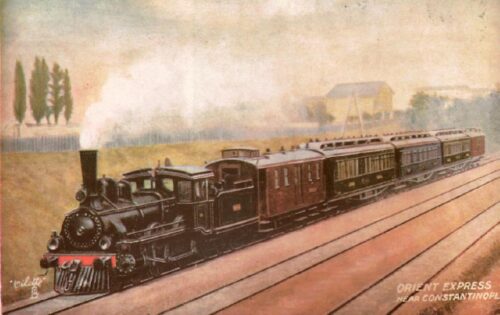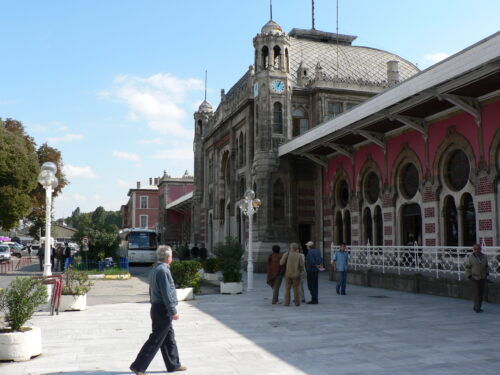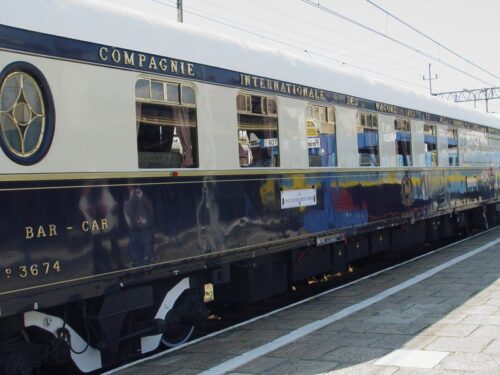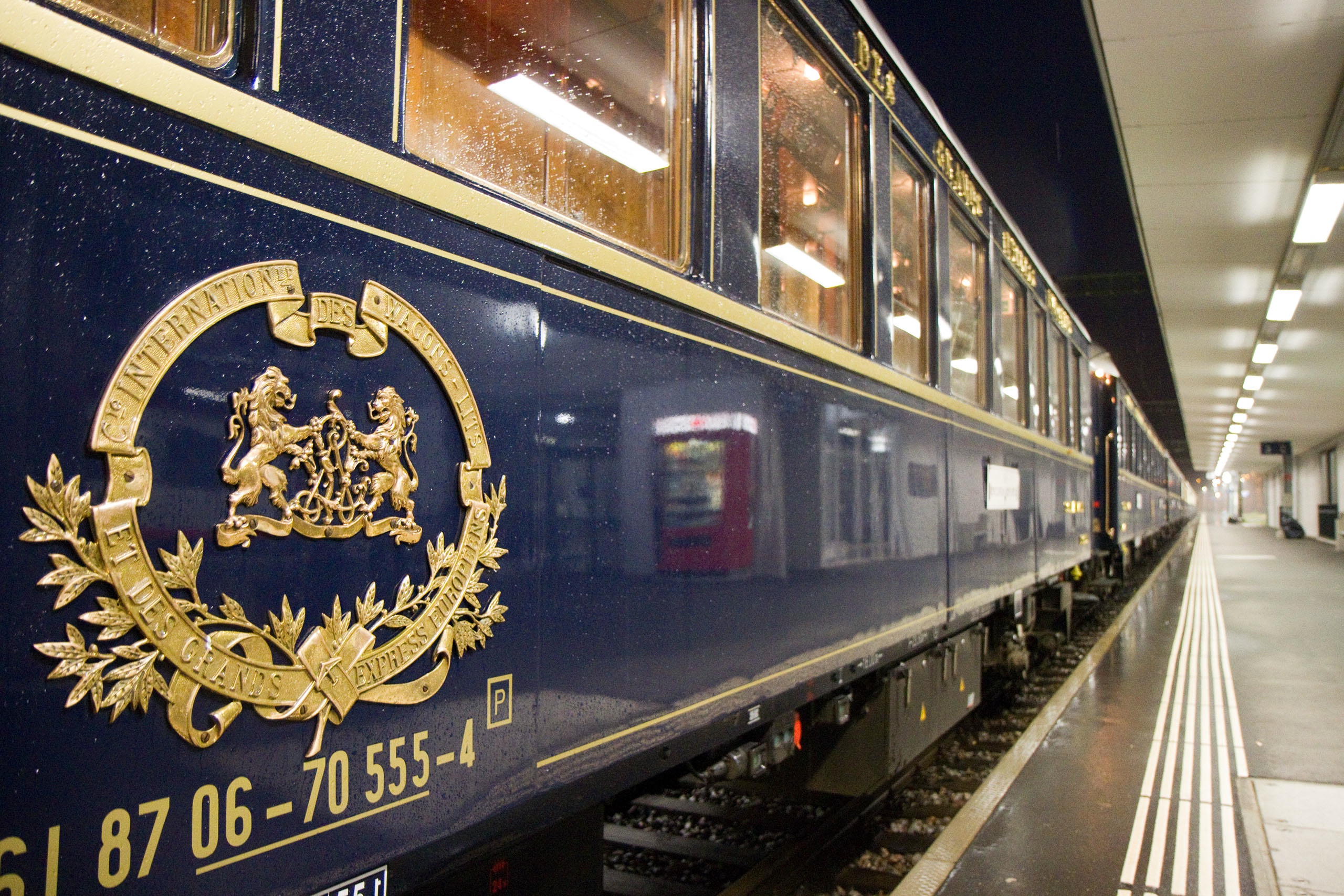The Orient Express, formally the Compagnie Internationale des Wagons-Lits, during a halt at Buchs (St. Gallen), border station between Liechtenstein and Switzerland. Photo: Murdockcrc / CC BY-SA 4.0 DEED.
The Orient Express was a legendary long-distance passenger train service that was created in 1883 by the Belgian company Compagnie Internationale des Wagons-Lits (CIWL) and that operated for more than a century until 2009. It was the brainchild of Georges Nagelmackers, a young Belgian engineer who was inspired by the railroads and sleeping cars he saw in the United States. He wanted to launch luxurious trains that would connect Europe from west to east and offer travelers an unprecedented experience of comfort, elegance and adventure.
The Orient Express offered various routes and branches throughout its history, but the most famous one was from Paris to Istanbul, the two cities that are most prominently associated with the train. The first journey on this route took place on October 4th, 1883, with forty passengers on board. The round trip lasted seven days and included a ferry crossing over the Black Sea from Varna to Constantinople. Later, the route was extended to Giurgiu in Romania, where passengers could take a boat across the Danube to Ruse in Bulgaria and then continue by train to Istanbul. This route became known as the Direct Orient Express and ran until 1977.

The Orient Express became a symbol of the belle epoque, a golden age of European culture and innovation that spanned from the end of the Franco-Prussian War in 1871 to the start of the First World War in 1914. The train attracted many famous and influential people, such as royalty, politicians, artists and writers, who enjoyed its lavish decorations, fine dining, impeccable service and exotic destinations. The train also inspired many works of art and literature, such as Agatha Christie’s Murder on the Orient Express and Graham Greene’s Stamboul Train (retitled Orient Express when published in the US). The train was also involved in many historical events, such as transporting diplomats to peace conferences, carrying wounded soldiers during wars, and being targeted by Nazi Germany during World War II.
The Orient Express earned the nickname “Spies’ Express” during its heyday. Due to its convenience and comfort, it was a favorite mode of transportation for continent-hopping secret agents who used it for espionage missions or diplomatic affairs. Mata Hari (the exotic dancer who was accused of being a double agent for France and Germany during World War I) traveled on the Orient Express during her European dance tour. The Orient Express was also a setting for fictional spy stories, such as Ian Fleming’s From Russia with Love and Alfred Hitchcock’s The Lady Vanishes.

One of the highlights of traveling on the Orient Express was the exquisite cuisine that was served on board. The meals were prepared by skilled chefs using fresh ingredients that were sourced from local markets along the route. The menus varied according to the season and the destination, but they always featured delicacies such as oysters, caviar, soups, pasta, fillet of beef with ‘château’ potatoes, ‘chaud-froid’ of game animals, chicken ‘à la chasseur,’ and a buffet of desserts including chocolate pudding. The dishes were accompanied by fine wines and champagne and served in elegant dining cars with crystal glasses and silverware. The passengers could also enjoy afternoon tea with pastries and coffee in their cabins or in the bar car.
Some of the other cities that the Orient Express visited on its different routes include Strasbourg, Munich, Vienna, Budapest, Bucharest, Belgrade, Sofia, Venice, Milan, Lausanne and Athens. The train also had a connection to London via Calais. The Orient Express faced many challenges and changes over the years, such as wars, revolutions, border closures, competition from airlines and high-speed trains. It stopped serving Istanbul in 1977 and its last scheduled service from Paris to Vienna departed on June 8th, 2007. The route then disappeared from European railway timetables until December 13th, 2021, when an ÖBB Nightjet resumed service three times per week on the Paris-Vienna route. However, this train is not branded as Orient Express.

Venice Simplon-Orient-Express
Although the original Orient Express ceased to operate in 2009, some of its carriages were preserved and restored by Belmond, a company that specializes in luxury travel, for the Venice Simplon-Orient-Express. Launched in 1982, the Venice Simplon-Orient-Express is a luxury train service that offers a unique travel experience across Europe. It consists of restored vintage carriages from the 1920s, 1930s and 1950s, each with its own history and charm. The train operates from March to November, connecting London, Paris, Venice and other destinations such as Zurich, Prague, Vienna and Istanbul. The journey includes fine dining, entertainment, sightseeing and overnight stays in elegant cabins or suites. The Venice Simplon-Orient-Express evokes the legend, glamour and romance of a bygone era.

Source
Venice Simplon-Orient-Express
Belmond.com
*The views and opinions expressed on this website are solely those of the original authors and contributors. These views and opinions do not necessarily represent those of Spotter Up Magazine, the administrative staff, and/or any/all contributors to this site.

